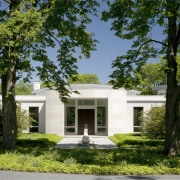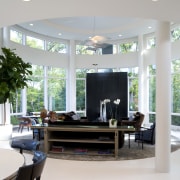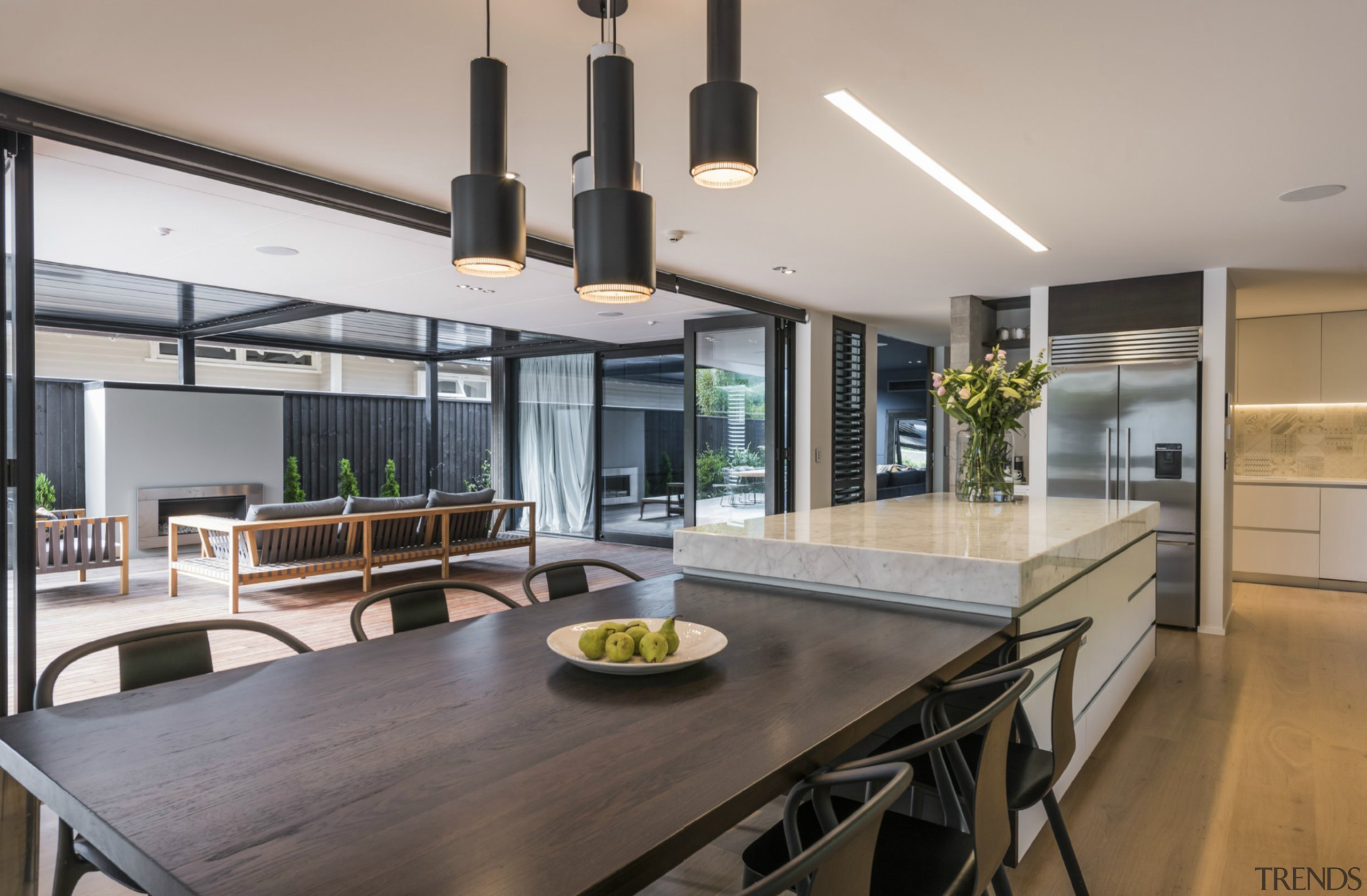Out of the woods
Nestled into the landscape at the top of a wooded ravine, this new contemporary house is at one with its natural surroundings.
Architecture doesn't have to take a back seat to a great view. Sometimes the most successful design is one that allows a house to have its own distinct personality while also providing a close connection to the natural landscape.
Both of these elements are intrinsically linked in the house featured on these pages. Designed by architect Jim Fraerman, the house is positioned at the top of a gently sloping hill overlooking a wooded ravine.
The entrance is framed by two large chestnut trees, which provide a symmetry matched by the central pavilion of the house itself and the formal landscaping.
Fraerman says the shape of the house, which comprises three large pavilions, was determined by two key factors the homeowners' desire for mainly single-level living, and their preference for a circular room overlooking the woodland.
"The round room gives the house a strong personality. It also helped decide the shape of the other two pavilions, which have their own distinct character."
From the exterior, the three pavilions are clearly recognizable by their differing roof lines. The circular flat roof above the round family room gives way to an arched roof over the central part of the house, which contains the formal living and dining rooms. The roof then flattens out again in a square shape above the master bedroom suite.
At the same time, however, each pavilion is linked through the rhythm of the windows, which include clerestories on both the front and rear elevations.
"The design evolved as a two-story house at the rear due to the slope of the site," says Fraerman. "We wanted to ensure there was a strong connection to the pool and the lawn, which are at a much lower level. The pool is placed to one side, rather than in the center of the landscape as it is covered throughout the winter, we didn't want to make it the main focus of the view from the living rooms. A basement playroom opens out to the pool area."
To provide a further connection between the house and the pool and lawn, the architect designed two symmetrical sets of stairs, which cascade down the slope either side of a formal boxwood garden. Both the symmetry and the gradual widening of the stairs as they step down the slope enhance a sense of formality.
The house itself has an axial symmetry, with a wing on either side of the central pavilion. Not surprisingly, the view is the key focus of all the interior spaces, beginning with the entrance.
"The front door opens to provide a view right through the house to the trees beyond," says Fraerman. "The entire house is very open, so there is a view from one living space to another. As well as providing a very contemporary living space, the open layout is designed to allow for easy entertaining."
Fraerman says the owners did not want to be rearranging the furniture for large family gatherings. Consequently, all the living areas are spacious. The furniture is also designed to provide flexibility a small card table in the formal living room can be easily joined to the dining table to make one large table.
Providing plenty of natural light was another priority. The circular family room, with its 18ft ceiling, has clerestory windows right around the space.
"As the rear of the house faces north, it was important to bring light in from the south-facing clerestory windows," says the architect. "However, the shape of this room means it does get early morning and late afternoon sunlight. The quality of the light also changes throughout the day."
White walls and white limestone floors further enhance the light look of the interior. Fraerman says the design team were careful to choose limestone that would not appear too beige or yellow.
"The limestone needed to complement the white and blue palette of materials that is repeated throughout the house."
The sleek, contemporary look continues in the kitchen, which features stainless steel kitchen cabinetry and white Pyrolave countertops.
"These surfaces have a slightly crackled appearance," says Fraerman. "The fine texture, which is almost an old-world look, contrasts with the very sleek kitchen environment. Similarly, the burled walnut cabinetry on the two islands has a distinctive grain that provides a visual warmth to counter the cooler elements.
"Dark wood, of various kinds, appears as a contrast to the white surfaces throughout the house in both the furniture and built-in features. Dark treated steel is another foil to the white. This forms the fireplace surround in the family room."
In the master bathroom, the rectilinear look again gives way to curved forms. A vaulted ceiling adds visual interest and helps convey a sense of intimacy. The ceiling forms a continuous surface above the separate rooms within the suite, reinforcing the flowing, open layout that characterizes the rest of the house.
Another key feature of this space is a floating mirror that appears suspended over a window. As well as allowing a soft light to filter into the bathroom, the mirror provides privacy.
Credit list
Architect
Structural engineer
Landscape architect
Paints and varnishes
Kitchen cabinetry
Kitchen sink
Oven
Refrigerator
Bathroom faucets
Wall coverings
Interior designer
Builder
Roofing
Stone flooring
Lighting
Countertops
Faucets
Cooktop
Bathroom basin
Shower fittings
Lighting
Story by: Colleen Hawkes
Home kitchen bathroom commercial design
Personality plus
Diving into nature
Classic looks, contemporary efficiency















